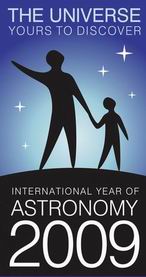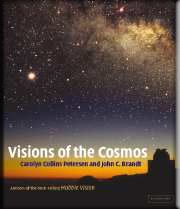 |
 The SpaceWriter's Ramblings |
 |
||
|
|
|
|
||
|
Anything and everything about science, especially astronomy and the cosmos. NOTE: This blog has migrated to a new address. Please update your favorites link accordingly.Visit my web site at Posting times are Powered by
|
4.01.2007 The Solar System Plays Tricks on UsJust when we think we understand a little bit about our neck of the cosmic woods, something comes up that whacks us upside the head (in a nice way) and spurs lots of questions. Take the planet Saturn, for example. We've all grown up being taught that this planet is a gas giant—made mostly of hydrogen gas, with varying amounts of helium, ammonia, nitrogen, methane, and other gases in its atmosphere. We've studied that atmosphere, charting storms that churn through it, and measuring temperature and wind speed variations. Heavy atmosphere, lots of round or semi-round storms in it, fast winds, and steadily thickening layers as you go down toward the core: that's what we pegged for Saturn. Still, the nature of planetary science is to study planets—and keep studying them for long periods of time. Planets aren't static places, not even the "deadest" of them. Not by any means. They change over time, develop new features on their surfaces or in their atmosphees. And, their visible appearances don't always tell us the full story. Just look at Saturn with infrared eyes, sensitive to thermal radiation (heat), for example, and interesting features pop right into view.  Saturn's Active North Pole, courtesy the Cassini Mission.There's this bizarre, six-sided feature that encircles the North Pole of the planet near 78 degrees north latitude, for example. It was actually discovered back in the 1980s by the Voyager spacecraft missions, but this is the first time we've been able to position a spacecraft (Cassini) in a good orbit to get a clear image of the thing. You can read more about the specifics of the image here, but suffice to say, this is the best view we've had of this atmospheric phenomenon ever. The hexagon of clouds is long-lived, so we'll have much more time to study it (at least as long as Cassini pipes images and data back). But what is it? There's nothing been seen like it at any other planet in our solar system, and nobody expected to see anything like it in Saturn's thick atmosphere, either. It's naturally occurring, so now the trick is to come up with a good atmospheric model that can explain the thing. There is a similar type of atmospheric phenomenon on Earth, called the polar vortex, so perhaps using that as a model, astronomers will be able to get a handle on Saturn's, which is four times the size of Earth. I remember when Saturn used to be thought strange because it had rings. Now, it turns out that Jupiter, Uranus, and Neptune have rings. And, in the distant past, Earth might have had one, too. What else will we learn about our solar system before we think we can say we know it all?? Labels: planets, Saturn, Saturn's atmosphere posted by CCP on 4/01/2007 08:40:00 PM | * |

Earth Hour! Do it for the Planet!
Blog RollPlanetarium-relatedLoch Ness ProductionsPurveyors of fine planetarium shows, music, and services. INTENSELY Good Space Music from a master in the genre! My cool astronomy cause: ScienceThe sites below belong to space and astronomy enthusiasts. I make every effort to check them and make sure they are still appropriate. However, I am not responsible for their content, nor do I endorse any of it by simply linking to them. As with all Web surfing, please exercise caution. Adot's Notblog A fellow traveler blogger and astronomy enthusiast! Astronomy Blog An astronomy blog pondering the big questions Astronomy Cast Astronomy Podcasting from Pamela Gay BadAstronomy.com Bad astronomy discussed and debunked along with fun stuff about really good astronomy! Chris Lintott's Universe Musings from an Oxford Astronomer. Cosmic Variance Random Samplings from a Universe of Ideas. Dave P's Astronomy blog Observational Astronomy and other TidBits European Southern Observatory Fine Ground-based astronomy images. Gemini Observatory Fine astronomy in infrared and visible wavelengths. Griffith Observatory's page. I wrote their exhibits! Observing The Sky Nightly Observation Reports from dedicated skygazers. The Official String Theory Web Site. Time to feed your mind! Pharyngula Evolution, development, and random biological ejaculations from a godless liberal. Cast off your blinders and come on in! Science Made Cool A compendium of discoveries, inventions and commentary. Slacker Astronomy Astronomy with a Slacker Twist. Space Telescope Science Institute The best from Hubble Space Telescope The Eternal Golden Braid Astronomy, Space Science, and Science Fiction Commentary. The Inoculated Mind Bills Itself as a weekly science mindcast. Thought-provoking, honest. Truth. UniqueThe Hairy Museum of Natural History
|




